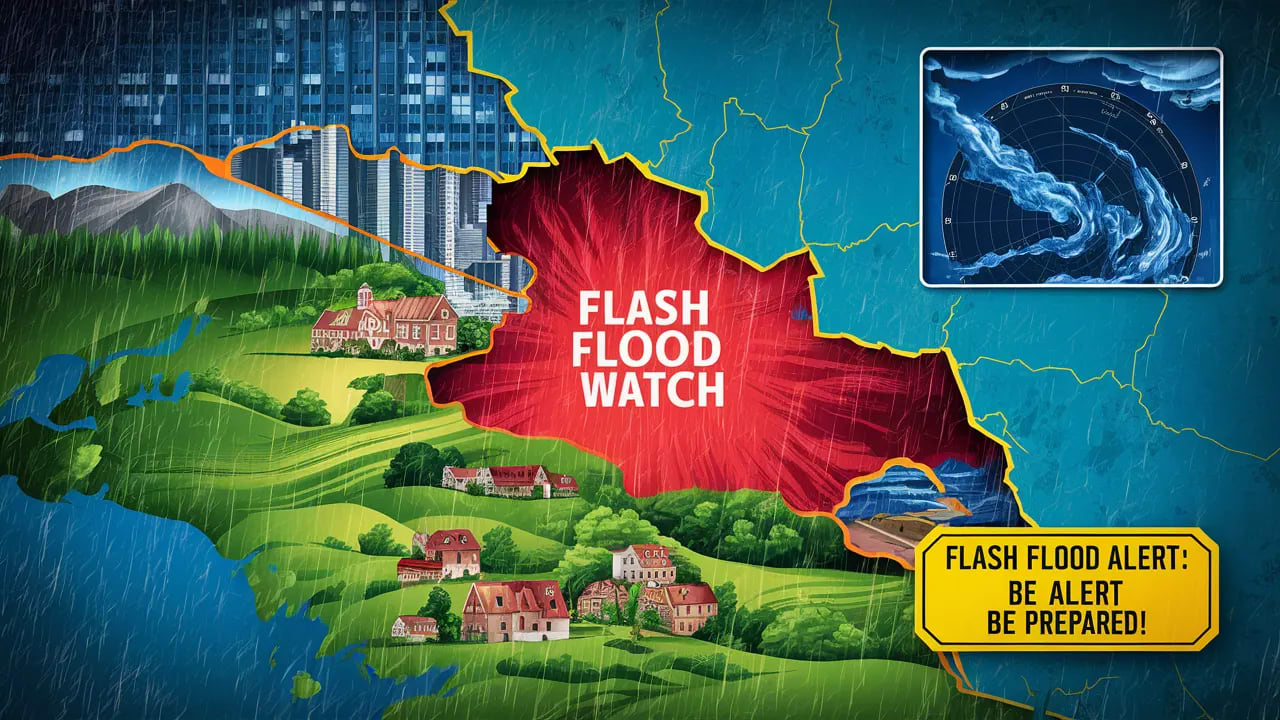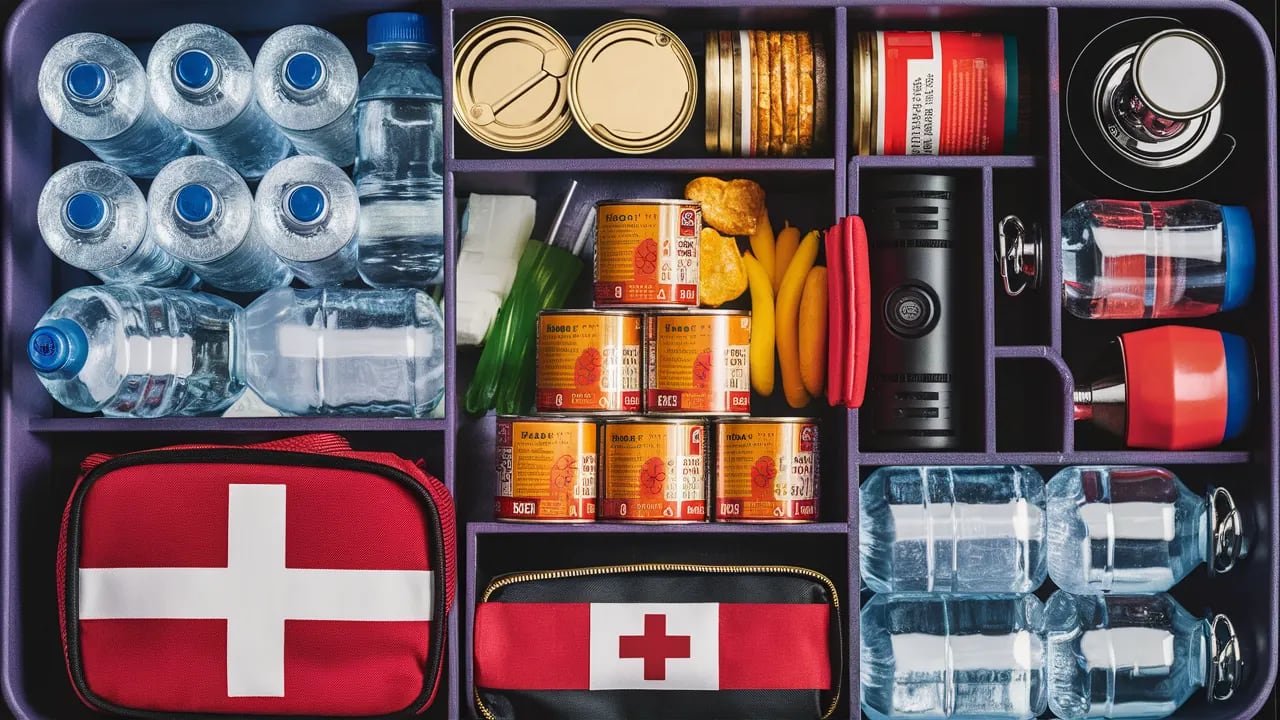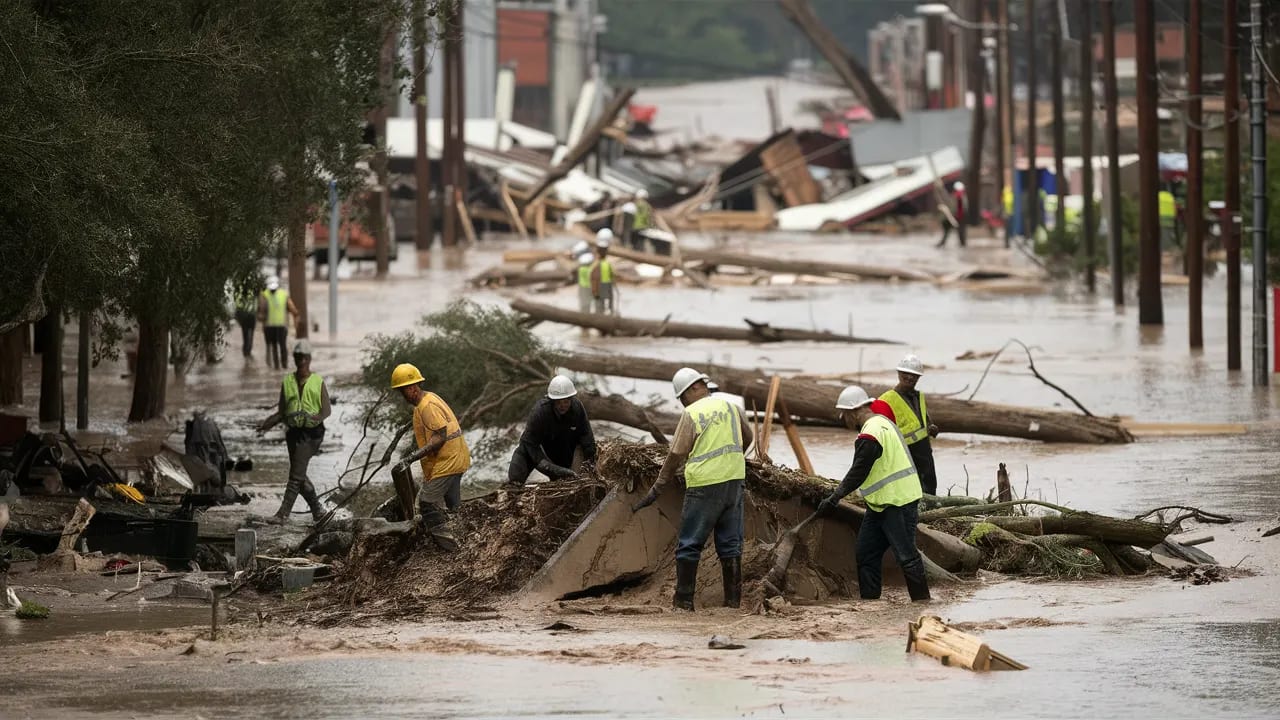Desert Flash Floods: Surviving the Unseen Danger (A Critical Safety Guide)
Flash floods in the desert are killers. Learn essential safety measures, understand warning signs, and discover how to protect yourself in arid regions with this expert guide from Optic Weather.
Table of Contents
Flash floods in desert regions are far more deadly than most people realize. Many underestimate the sheer power and speed at which these events unfold. As a desert hydrology specialist who has dedicated the last 22 years to studying flash floods, I’ve seen firsthand the devastating impact they can have on arid regions. The reality is, these aren’t your typical floods; research shows that desert flash floods can reach full force within minutes, sometimes as little as 15, leaving little to no time for escape. It’s a silent killer lurking beneath the sun-baked landscape.
Recent studies from the Desert Weather Institute highlight a critical point: proper preparation can reduce flood-related risks by up to 85%. That’s a staggering figure, and it stress the importance of being informed and proactive. We’re not just talking about staying dry; we’re talking about saving lives.
In this comprehensive guide, we’ll examine the essential safety measures and response strategies you need to navigate the dangers of desert flash floods. We’ll search into the science behind their formation, learn to recognize early warning signs, and equip you with the knowledge to protect yourself, your loved ones, and your property. We’ll also touch on the spiritual aspect – finding strength and guidance in faith during times of crisis, drawing parallels from biblical accounts of overcoming adversity. This isn’t just about weather; it’s about preparedness, resilience, and ultimately, survival.
Understanding Desert Floods
Formation Patterns
Desert flash floods are unlike any other flooding event, primarily because of the unique characteristics of arid landscapes. These floods are not slow-moving rivers overflowing their banks. They are violent surges of water that materialize seemingly from nowhere, transforming dry washes into raging torrents in a matter of minutes. This rapid transformation is what makes them so incredibly dangerous.
The key is understanding the factors that contribute to this rapid formation. Intense rainfall is, of course, the primary trigger. But it’s not just the amount of rain; it’s the intensity with which it falls. Desert soils, often compacted and dry, struggle to absorb water quickly. This leads to rapid runoff, channeling the water into existing drainage systems like washes and arroyos. These channels, normally dry, become conduits for the surging floodwaters.
Formation Factors
Let’s consider a real-world example. In 2018, a flash flood in Moab, Utah, caught many hikers by surprise. A localized, intense thunderstorm dumped several inches of rain in a short period. The dry, rocky terrain offered little to no absorption, and the water quickly funneled into narrow canyons, creating a deadly flash flood that swept away vehicles and stranded hikers. This tragic event mark the need for constant vigilance and preparedness in desert environments.
Warning Signs
Recognizing the early warning signs of a flash flood can be the difference between life and death. It’s about being observant and trusting your instincts. Don’t dismiss seemingly insignificant signs; they could be the first indicators of an impending disaster.
Warning Indicators
Visual Signs
- Distant Rain: Even if it’s not raining where you are, dark clouds and heavy rainfall in the surrounding mountains or upstream can be a major warning sign. Remember, water flows downhill.
- Wall of Water: This is the most obvious and terrifying sign. If you see a sudden surge of water approaching, act immediately.
- Weather Monitoring: Pay close attention to weather forecasts and alerts. A reliable weather radio is an essential tool for staying informed.
- Debris Movement: Keep an eye out for unusual debris flowing in washes or streams. This could include branches, leaves, and even larger objects being carried by the current.
Environmental Changes
- Sound Changes: Listen for a sudden roar or rumbling sound that could indicate a flash flood approaching. The sound of rushing water can travel a surprisingly long distance in the desert.
- Animal Behavior: Animals often sense danger before humans do. If you notice animals behaving erratically or moving to higher ground, it’s a sign to be cautious.
- Water Appearance: A sudden change in the color or clarity of the water can indicate a flash flood upstream. The water may become muddy or filled with sediment.
- Ground Conditions: Be aware of softening ground or increased moisture in areas that are normally dry. This could indicate that the ground is becoming saturated and prone to flooding.
Let’s look at a biblical parallel. In Matthew 16:3, Jesus rebukes the Pharisees and Sadducees for being able to interpret the appearance of the sky but not the signs of the times. Similarly, we must be attentive to the signs around us, both natural and technological, to protect ourselves from impending danger.
Safety Protocols
Immediate Response
When a flash flood hits, seconds count. Your immediate response can significantly impact your chances of survival. It’s about acting quickly, decisively, and without hesitation.
Response Steps
The most important thing to remember is this: never underestimate the power of moving water. Even a few inches of fast-flowing water can sweep you off your feet. Six inches of moving water can knock down an adult. Two feet of rushing water can carry away most vehicles.
Evacuation Plans
Having a pre-planned evacuation route can be a lifesaver. It’s about thinking ahead, identifying potential hazards, and creating a clear plan of action.
Plan Elements
Route Planning
- High Ground Locations: Identify the highest points in your area and map out routes to reach them.
- Multiple Paths: Have alternative routes in case your primary path is blocked or flooded.
- Emergency Gear: Keep emergency gear readily available, including water, food, first-aid supplies, and a communication device.
- Meeting Points: Designate a safe meeting point where family members can reunite after evacuating.
Communication
- Alert Systems: Familiarize yourself with local alert systems and sign up for emergency notifications.
- Family Plans: Discuss your evacuation plan with your family and ensure everyone knows what to do in case of a flash flood.
- Emergency Contacts: Keep a list of emergency contacts readily available, including family members, friends, and local authorities.
- Location Sharing: Consider using a location-sharing app to help family members find each other in case of an emergency.
Just as Noah prepared the ark before the flood (Genesis 6), we must prepare ourselves and our families before disaster strikes. Proactive planning is an act of faith and responsibility.
Vehicle Safety
Driving Protocols
Driving in flood conditions is incredibly dangerous. The best advice is simple: Don’t do it. But if you find yourself caught in a flash flood while driving, here’s what you need to know:
Safety Rules
Remember, even a large vehicle can be swept away by relatively shallow water. Don’t take the risk.
Vehicle Preparation
Preparing your vehicle for potential flood situations can significantly improve your chances of survival. It’s about being proactive and equipped.
Preparation Steps
Emergency Equipment
- Escape Tools: Keep a window breaker and seatbelt cutter in your vehicle in case you need to escape quickly.
- Safety Gear: Pack a first-aid kit, flares, and a reflective vest to help you stay safe and visible.
- Vehicle Safety Kit: Include jumper cables, a flashlight, and basic tools for emergency repairs. Vehicle safety kits are available for purchase.
- Communication Devices: Carry a fully charged cell phone and consider investing in a satellite phone or two-way radio for areas with limited cell service.
Vehicle Readiness
- Maintenance Checks: Regularly inspect your vehicle’s brakes, tires, and engine to ensure they are in good working order.
- Fuel Levels: Keep your gas tank at least half full at all times, primarily during the monsoon season.
- Tire Condition: Ensure your tires have adequate tread to maintain traction in wet conditions.
- Emergency Supplies: Stock your vehicle with extra water, food, and blankets in case you become stranded.
Communication Systems
Alert Networks
Staying informed is crucial during a flash flood event. Understanding the different alert systems and how they work can help you react quickly and effectively.
Alert Types
Emergency Contact
Having multiple ways to communicate is essential in an emergency. Don’t rely solely on your cell phone, as cell service can be unreliable during a disaster.
Contact Methods
Primary Systems
- Phone Networks: Keep a fully charged cell phone and a portable charger.
- Radio Systems: Invest in a handheld two-way radio for communicating with others in your group.
- Digital Alerts: Sign up for emergency alerts from your local government and weather services. Communication gear can assist in relaying digital alerts.
- Digital alerts A great way to stay up to date with the latest information
Backup Options
- Satellite Devices: Consider purchasing a satellite phone or personal locator focal point (PLB) for areas with limited cell service.
- Emergency Guidepost: Carry a whistle or signal mirror to attract attention if you become stranded.
- Signal Methods: Learn basic signal techniques, such as using a fire to create smoke signals.
- Meeting Points: Establish pre-determined meeting points with your family and friends in case you become separated.
Property Protection
Structural Measures
Protecting your property from flood damage can minimize losses and help you recover more quickly.
Protection Methods
Emergency Actions
When a flash flood is imminent, taking quick action can minimize the damage to your property.
Action Steps
Immediate Measures
- Barrier Deployment: Quickly deploy sandbags or flood barriers around your doors and windows.
- Power Shutdown: Turn off the electricity to prevent electrical shocks.
- Flood Protection: Move valuable items to higher ground. Flood protection equipment can be purchased to help.
- Document Security: Protect important documents by placing them in waterproof containers or moving them to a safe location.
Recovery Preparation
- Insurance Contact: Contact your insurance company to report the potential damage.
- Documentation: Take photos and videos of your property before and after the flood to document the damage.
- Supply Protection: Secure essential supplies, such as food, water, and medication.
- Equipment Moving: Move outdoor equipment and furniture to higher ground or inside a secure building.
Recovery Planning
Initial Steps
The recovery process begins as soon as the floodwaters recede. It’s about prioritizing safety, assessing the damage, and taking steps to mitigate further losses.
Recovery Actions
Long-term Recovery
Long-term recovery can take months or even years. It’s about rebuilding your life, restoring your property, and taking steps to prevent future damage.
Recovery Elements
Documentation
- Damage Photos: Maintain a detailed record of all damage with photos and videos.
- Insurance Claims: File your insurance claim as soon as possible and keep detailed records of all communication with your insurance company.
- Recovery Tools: Utilize Recovery tools to help facilitate the process.
- Repair Records: Keep accurate records of all repairs and expenses.
Restoration
- Professional Assessment: Hire a qualified professional to assess the structural integrity of your home and identify any potential hazards.
- Repairs: Make necessary repairs to restore your home to a safe and habitable condition.
- Prevention Upgrades: Consider making upgrades to your property to prevent future flood damage.
- Future Planning: Develop a long-term plan for managing flood risks and protecting your property.
In Nehemiah, we see the Israelites rebuilding the walls of Jerusalem after they had been destroyed (Nehemiah 2-6). It was a long and arduous process, but they persevered, relying on God’s strength and guidance. Similarly, we must approach the recovery process with faith, determination, and a commitment to rebuilding.
Frequently Asked Questions
How fast do flash floods develop?
Factors include:
- Rainfall Intensity: High rainfall intensity over a short period is the primary driver of flash flood development. The faster the rain falls, the quicker the ground becomes saturated, and the faster the runoff begins.
- Ground Conditions: Dry, compacted soil is less absorbent than moist, loose soil. This means that more water will run off the surface, increasing the risk of a flash flood.
- Topography: Steep slopes and narrow canyons accelerate runoff and concentrate water flow, increasing the speed and intensity of flash floods.
- Channel Systems: Washes, arroyos, and other drainage channels act as conduits for floodwaters, rapidly channeling them downstream.
What’s the safest response?
Priority actions:
- Move to High Ground: The most important thing you can do is get to higher ground as quickly as possible.
- Stay Informed: Monitor weather forecasts and emergency alerts to stay aware of the situation.
- Avoid Water: Never attempt to cross flowing water, even if it looks shallow.
- Wait for Clear: Remain in a safe location until the floodwaters have receded and it is safe to return.
When is it safe to return?
Consider:
- Official Clearance: Wait for official clearance from local authorities before returning to your home or business.
- Water Recession: Ensure that the floodwaters have completely receded and the area is no longer at risk of flooding.
- Structure Safety: Inspect your home or building for structural damage before entering.
- Access Routes: Make sure that roads and access routes are clear and safe to travel.
Additional Resources
Educational Materials
- Flash Flood Basics: Learn about the causes and characteristics of flash floods.
- Safety Protocols: Understand the essential safety measures to take during a flash flood.
- Warning Systems: Familiarize yourself with local alert systems and how they work.
- Recovery Guides: Get information on how to recover from a flash flood and prevent future damage.
Technical Resources
- Weather Data: Access real-time weather data from reliable sources.
- Emergency Plans: Review local emergency plans and evacuation routes.
- Contact Information: Keep a list of emergency contacts readily available.
- Equipment Guides: Find information on essential equipment for flood preparedness and recovery.
Remember: In desert regions, flash flood awareness and quick response are crucial for survival. Stay informed, stay prepared, and stay safe.
_















